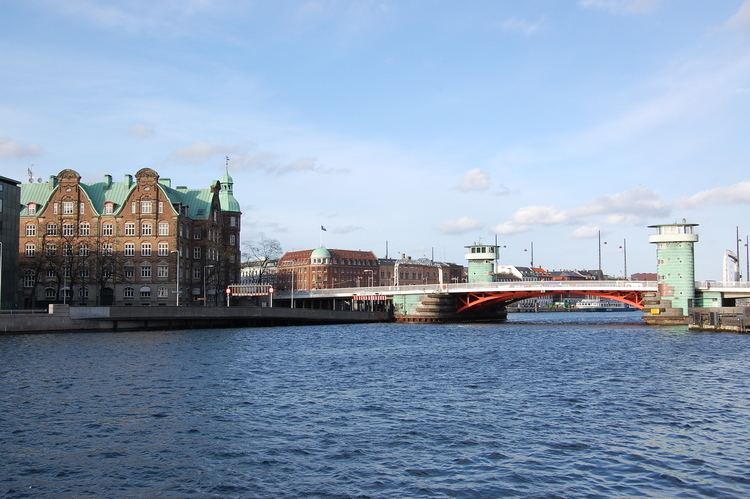Design Bascule bridge Designer Kaj Gottlob Total length 115 m Architect Kaj Gottlob | Width 27 m Opened 17 December 1937 Clearance below 16 m Bridge type Bascule bridge | |
 | ||
Locale SlotsholmenChristianshavn Similar Langebro, Holmen - Copenhagen, Børsen, Slotsholmen, Inderhavnsbroen | ||
Knippelsbro
Knippelsbro (English: Knippel Bridge) is a bascule bridge across the Inner Harbour of Copenhagen, Denmark, connecting Børsgade (English: Stock Exchange Street) on Zealand-side Slotsholmen to Torvegade (English: Market Street) on Christianshavn. It is one of only two bridges to carry motor vehicles across the harbour in central Copenhagen, the other being Langebro.
Contents
- Knippelsbro
- Knippelsbro with politicans upside down
- 1620 The first bridge
- 1712 The second bridge
- 1816The third bridge
- 1869 The BW bridge
- 1908 Axel Bergs bridge
- 1937 The current bridge
- Name
- References
The bridge, the fifth on the site, is 115 metres long and was inaugurated in 1937.
Knippelsbro with politicans upside down
1620: The first bridge
The first bridge between Copenhagen and Christianshavn was constructed in 1618-20 by Christian IV in connection with the foundation of Christianshavn. The bridge was called the "Great Amager Bridge" or "the long bridge".
1712: The second bridge
A new wooden bridge was built in the same location in 1712. It was decoated with four Hercules sculptures by the artist Johan Christopher Sturmberg. Neither the sculptures or images of them exist today.
1816:The third bridge
The bridge was replaced by a new, wooden bridge in 1861. The bridge had two gates which were decorated with four wooden sculptures of "The Four Winds". They were created by the sculptor Frederik Christian Willerup and are now owned by the Museum of Copenhagen.
1869: The B&W bridge
In 1868-69, Burmeister & Wain constructed a railway bridge based on renderings from the groceers J. Adolphs and Christian August Broberg. It ran from Slotsholmsgade ro Torvegade and it was therefore possible to use the old bridge while it was built. It openered on 1 August 1869.
1908: Axel Berg's bridge
A new railway bridge was built In 908. It was designed by the architect Axel BergAxel Berg and had two characteristic pavilions. It was built by the Port Authority's building master H. C. V. Møller and opened ion 30 December 1908. It ran from Børsgade to Torvegade.
1937: The current bridge
In the first half of the 1930s, it was once again decided to build a new bridge. It was decided to build it at the same site as the old one and it was therefore necessary to build a temporary bridge. It was in use from 1934 to 1937.
The current Knippelsbro was inaugurated on 17 December 1947. It was designed by Kaj Gottlob and built by Wright, Thomsen & Kier in collaboration with Burmeister & Wain.
Name
The bridge was originally known as Store Amager Bro (English: Great Amager Bridge) or Langebro (English: Long Bridge) and from around 1700 Christianshavns Bro (English: Christianshavn's Bridge) is seen. The current name stems from Hans Knip who became bridge caretaker in 1641, in charge of operating the bridge and collecting tolls from passing ships. His house became known as Knippenshus and during the 17th century the bridge became known as Knippensbro. The current form of the name is seen from the second half of the 19th century but has never been officially approved.
